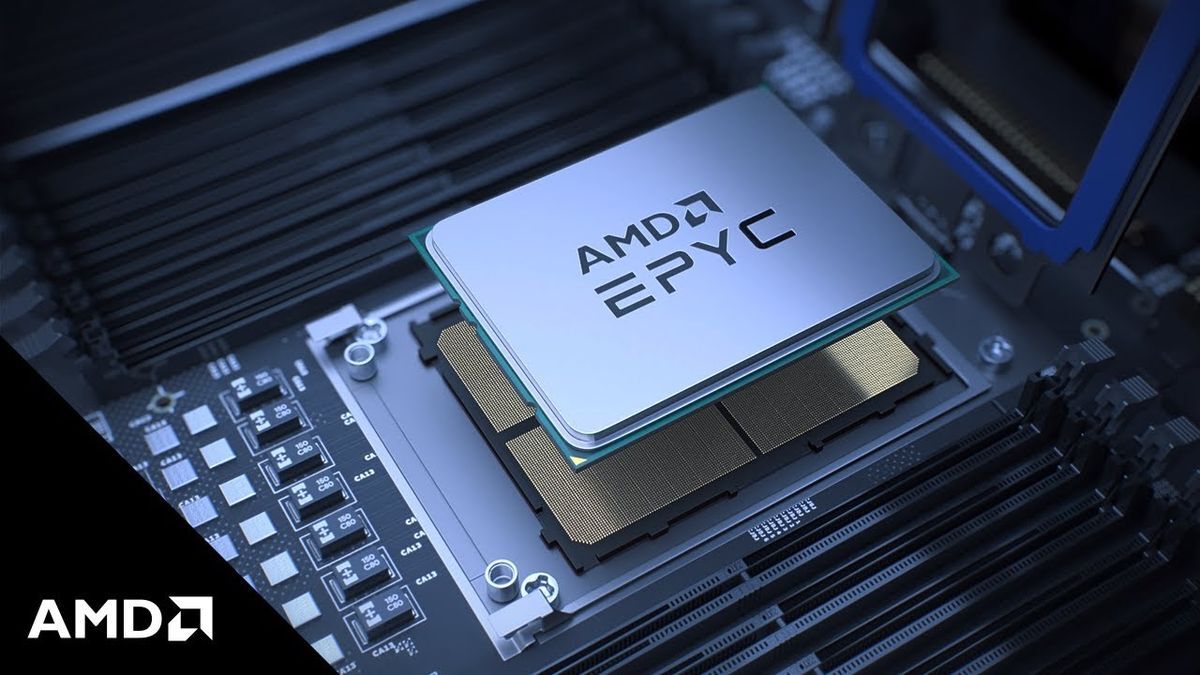Intel’s market cap: 98b $
AMD’s market cap: 230b $
What the fuck??? Insert Jumanji meme “What year is it?”
Numbers check out too. Wintel, slayed, and we didn’t even notice.
The whole ring -3 / MINIX business a while back put a serious amount of FUD into the market and Intel has been on the wane ever since.
This is not necessarily unfounded FUD either. MINIX is literally there, lurking inside all modern Intel processors, waiting to be hacked by the enterprising ne’er-do-well. (NB: This is not to say that there aren’t ways to do similar things to AMD chips, only that MINIX is not present in them, and it’s theoretically a lot more difficult.)
Then bear in mind that MINIX was invented by Andrew Tanenbaum, someone Linus Torvalds has had disagreements with in the past (heck, Linux might not exist if not for MINIX and Linus’ dislike of the way Tanenbaum went about it), and so there’s an implicit bias against MINIX in the data-centre world, where Linux is far more present than it is on the desktop.
Thus, if you’re a hypothetical IT manager and you’re going to buy a processor for your data-centre server, you’re ever so slightly more likely to go for AMD.
Their P/E is 125
One fucking hundred and twenty five.
That’s more than twice Nvidia. It’s completely disconnected from reality.
I predicted in 2017 stock price over $100 when that happened.
Took about 3-4 years longer than expected, but still congratulations to AMD, on their successful fight back from the brink of bankruptcy.Not to diminish the hard work AMD has put in, but it’s at least partially related to Intel’s ongoing issues with quality assurance (or the lack thereof, rather), and thus it’s arguable that they hold a stronger position at least partially due to Intel’s weakness in the last 10 years.
Not security?
Having a usable product while your opponents continually shoot themselves in the foot is a viable market strategy.
Valve Corporation has entered the chat.
What is this strategy called?
“Basic competence?”
The best strategy there is
Absolutely, if Intel hadn’t been sleeping on their laurels for 5 years on desktop performance, and had made 6 and 8 core CPUs themselves before Ryzen arrived. Ryzen would not have been nearly as successful. This was followed by the catastrophic Intel 10nm fab failures, allowing AMD to stay ahead even longer.
So absolutely, AMD has been helped a lot by Intel failing to react in time, and then failing in execution when they did react.
Still I think congratulation is in order, because Ryzen was such a huge improvement on the desktop and server, that they absolutely deserve their success. Threadripper was icing on the cake, and completely trashed Intel in the workstation segment.And AMD exposed Intel’s weakness in face of real competition. Arm and Nvidia had already done that in their respective areas, but AMD did it on Intel’s core business.
For people who weren’t looking for a developer workstation back then: Threadripper suddenly brought the performance of a xeon workstation costing more than 20k for just a bit over 2k.
That suddenly wasn’t a “should I really invest that much money” situation, but a “I’d be stupid not to, productivity increase will pay for that over the next month or so”
productivity increase will pay for that over the next month or so
Found the fellow Rust developer
Cargo build universe
For sure, and as someone who has been stuck running Linux on an Intel box after being spoiled by all-AMD for about 6 years, I gotta say, the fact that a lot of AMD stuff “just works” in Linux when you have to jump through hoops for the same from Intel is probably a big reason they’re picking up in datacenters, too. Datacenters don’t usually run on fucking Windows Server, they usually run Linux, and AMD just plays better with Linux at the moment. (In my personal experience, anyway)
Yes this too is really a turnaround compared to “old times”. Intel used to be the safe choice, that’s definitely not the case anymore.
Intel’s flagship 128-core Xeon 6980P ‘Granite Rapids’ processor costs $17,800, making it the company’s most expensive standard CPU ever. By contrast, AMD’s most expensive 96-core EPYC 6979P processor costs $11,805.
Jesus Christ when did we break 20 cores?
have you actually been living under a rock or something
CPUs have multiple cores now? Amazing.
I got a new laptop last month for $2200US, it has 24 cores. i9-14900HX
Granite Rapids is probably going win some of that back: a lot of the largest purchasers of x86 chips in the datacenter were buying Epycs because you could stuff more cores into a given amount of rack space than you could with Intel, but the Granite Rapids stuff has flipped that back the other way.
I’m sure AMD will respond with EVEN MORE CORES, and we’ll just flop around with however many cores you can stuff into $15,000 CPUs and thus who is outselling whom.
Launched June of 2023
128c/256t
$11,900
400w TDP
Launched Q3 of 2024
128c/256t
$17,800
500w TDP
I don’t think Granite Rapids are going to flip it back in Intels favor
It’s not just cores - it is higher performance per rack unit while keeping power consumption and cooling needs the same.
That allows rack performance upgrades without expensive DC upgrades - and AMD has been killing dual and quad socket systems from intel with single and dual core epycs since launch now. Their 128 core one has a bit too high TDP, but just a bit lower core count and you can still run it in a rack configured for power and cooling needs from over a decade ago.
Granite rapids has too high TDP for that - you either go upgrade your DC, or lower performance per rack unit.











